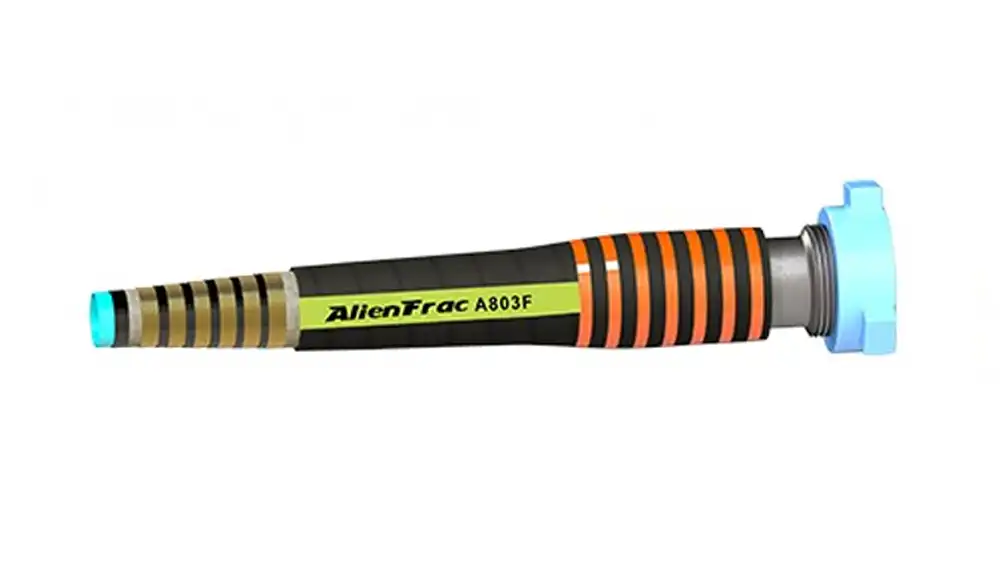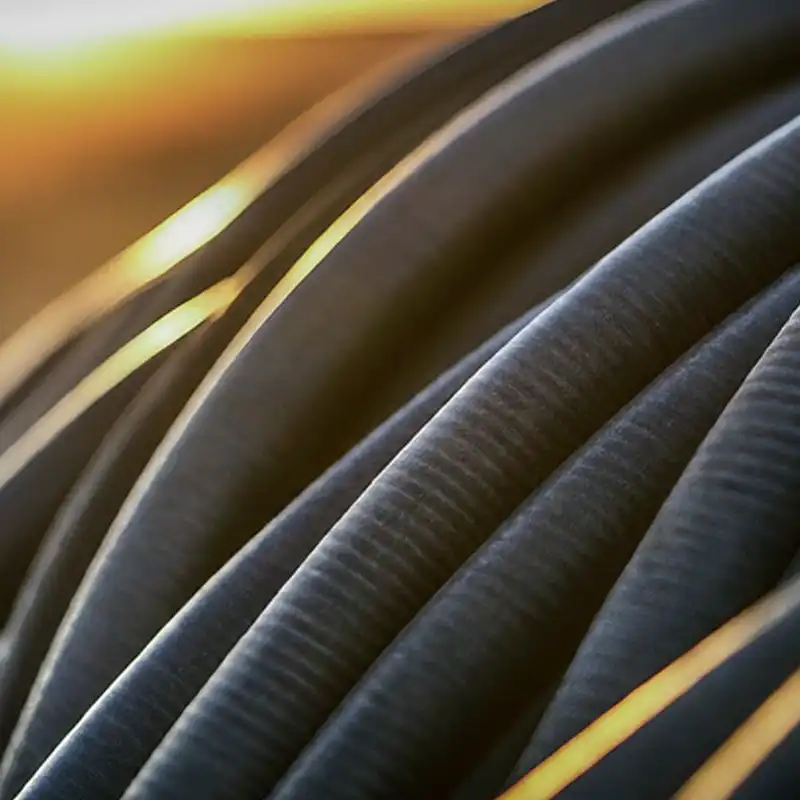Selecting the right frac hose is crucial for ensuring the efficiency and safety of your operations in industries such as oil and gas, agriculture, and construction. With a multitude of options available in the market, it can be overwhelming to make the best choice. Fear not!
In this comprehensive guide, we’ll walk you through the essential factors to consider when selecting frac hose, empowering you to make an informed decision that meets your needs perfectly.
What Is Frac Hose

Frac hoses, short for fracturing hoses, are specially designed to withstand high-pressure applications, making them indispensable in hydraulic fracturing operations. These hoses are typically used to transport fluids, such as water, chemicals, and proppants, under high pressure from the pumping unit to the wellbore during fracking.
Fracking, a process used to extract oil and gas from shale rock formations, involves injecting a mixture of water, sand, and chemicals into the well at high pressure to create fractures in the rock, allowing the release of trapped hydrocarbons. Frac hoses play a critical role in this process by delivering the necessary fluids to the wellhead safely and efficiently.
Factors to Consider When Selecting Frac Hose
Choosing the right frac hose involves evaluating various factors to ensure optimal performance and safety. Here are five expert tips to guide you through the selection process:
Material Composition
When selecting frac hose, consider the material composition carefully. Opt for hoses made from high-quality materials, such as synthetic rubber or thermoplastic, that offer superior resistance to abrasion, corrosion, and chemical damage. These materials ensure durability and longevity, even in harsh operating conditions.
Pressure Rating
The pressure rating of the frac hose is a crucial consideration to prevent blowouts and leaks. Ensure that the hose’s maximum working pressure exceeds the maximum pressure of your application to maintain safety and reliability. Additionally, factor in the surge pressure or pressure spikes that may occur during operation to select a hose with an appropriate safety margin.
Flexibility and Bend Radius
Frac hoses must be flexible enough to accommodate bending and movement without kinking or collapsing, especially in tight spaces or rugged terrain. Check the hose’s bend radius, which determines the minimum radius at which it can bend without causing damage. Choose hoses with a sufficient bend radius to ensure smooth fluid flow and prevent premature failure.
Temperature Range
Evaluate the temperature range of the frac hose to ensure compatibility with the operating environment. Consider the maximum and minimum temperatures the hose will be exposed to during operation, including both ambient and fluid temperatures. Select hoses that can withstand extreme temperatures without compromising performance or integrity.
End Fittings and Couplings
The type of end fittings and couplings used in frac hoses significantly impacts their reliability and ease of installation. Opt for high-quality fittings, such as camlock or hammer union connections, that provide a secure and leak-free connection between the hose and other components, such as pumps, manifolds, and wellheads. Ensure compatibility with existing equipment and industry standards to avoid compatibility issues and downtime.
How to Select Frac Hose
Selecting the right frac hose is crucial for ensuring the safety, efficiency, and effectiveness of hydraulic fracturing operations.
Here are some key steps to guide you in choosing the most suitable frac hose for your needs:
Selecting the right frac hose is crucial for ensuring the safety, efficiency, and success of hydraulic fracturing and other high-pressure applications. To help you navigate the process effectively, we’ve outlined a step-by-step guide to selecting frac hose:
Step 1: Assess Your Requirements
Before diving into the selection process, assess your specific requirements, including the type of fluids you’ll be transporting, operating pressures, temperature ranges, and environmental conditions. Understanding your needs will guide your decision-making process.
Step 2: Research Material Options
Research the various material options available for frac hoses, such as synthetic rubber, thermoplastic, or hybrid blends. Consider factors like abrasion resistance, chemical compatibility, and durability to determine which material best suits your application.
Step 3: Determine Pressure Ratings
Determine the maximum operating pressure requirements for your application, including both continuous working pressure and surge pressure. Choose a frac hose with a pressure rating that exceeds your maximum operating pressure to ensure safety and reliability.
Step 4: Evaluate Flexibility and Bend Radius
Evaluate the flexibility and bend radius of potential frac hoses, considering the layout of your operation and any tight spaces or rugged terrain where the hose will be installed. Opt for hoses with sufficient flexibility and a suitable bend radius to prevent kinking or collapsing during use.
Step 5: Consider Temperature Range
Consider the temperature range in which the frac hose will operate, including ambient temperatures and the temperature of the fluids being transported. Select hoses that can withstand extreme temperatures without compromising performance or integrity.
Step 6: Assess End Fittings and Couplings
Assess the type of end fittings and couplings used in frac hoses, ensuring compatibility with your existing equipment and industry standards. Choose high-quality fittings that provide a secure and leak-free connection to prevent downtime and ensure efficient operations.
Step 7: Review Regulatory Compliance
Review regulatory requirements and industry standards for frac hose selection and usage, ensuring compliance with agencies such as OSHA and API. Adhering to these regulations helps ensure safety, minimize risks, and avoid costly penalties.
Step 8: Seek Recommendations and Expert Advice
Seek recommendations from industry experts and peers who have experience with frac hose selection and usage. Their insights can provide valuable guidance and help you make informed decisions.
Step 9: Request Samples and Test Performance
Request samples of potential frac hoses from manufacturers or suppliers and test their performance in real-world conditions whenever possible. Assess factors such as durability, flexibility, and compatibility to ensure the chosen hose meets your expectations.
Step 10: Make Your Selection
Based on your assessment of requirements, material options, pressure ratings, flexibility, temperature range, end fittings, regulatory compliance, and expert recommendations, make your final selection. Choose the frac hose that best meets your specific needs and offers the highest level of performance, safety, and reliability.
Step 11: Request a Quote
Once you’ve selected the ideal frac hose for your application, request a quote from your chosen manufacturer or supplier. Ensure the quote includes all relevant details, such as quantity, pricing, delivery lead times, and any additional services or support offered.
Step 12: Place Your Order
After reviewing the quote and confirming all details, place your order for the selected frac hose. Coordinate delivery logistics and ensure clear communication with the manufacturer or supplier to facilitate a smooth transaction.
By following these steps, you can confidently select the right frac hose for your needs, ensuring optimal performance, safety, and efficiency in your operations.
FAQs
What is the typical lifespan of a frac hose?
The lifespan of a frac hose depends on various factors, including the frequency of use, operating conditions, maintenance practices, and material quality. Generally, high-quality frac hoses can last anywhere from one to five years or more with proper care and maintenance.
Can I repair a damaged frac hose?
While minor damages to frac hoses can sometimes be repaired using patching kits or splicing techniques, it’s often more cost-effective and safer to replace the hose entirely, especially if the damage compromises its structural integrity or pressure rating.
Are there any regulations or standards for frac hose selection?
Yes, several regulatory agencies, such as the Occupational Safety and Health Administration (OSHA) and the American Petroleum Institute (API), provide guidelines and standards for selecting and using frac hoses in industrial applications. It’s essential to adhere to these regulations and standards to ensure compliance and minimize the risk of accidents or injuries.
How can I prevent hose failures and leaks during operation?
To prevent hose failures and leaks, conduct regular inspections and maintenance of frac hoses, including visual inspections for signs of wear, damage, or deterioration, and pressure testing to verify integrity. Replace worn or damaged hoses promptly, and ensure proper installation and use of compatible fittings and couplings.
What are some common causes of frac hose failures?
Common causes of frac hose failures include abrasion, corrosion, chemical exposure, excessive bending or twisting, pressure surges, and improper installation or maintenance. Regular inspection, proper handling, and adherence to safety guidelines can help mitigate these risks and prolong hose lifespan.
Can I use the same frac hose for different fluids or applications?
It’s not recommended to use the same frac hose for different fluids or applications unless it’s specifically designed and rated for such versatility. Using hoses with incompatible materials or pressure ratings for different fluids or applications can lead to contamination, premature failure, and safety hazards. Always use hoses that are compatible with the intended fluid and operating conditions.
Conclusion
Selecting the right frac hose is paramount for ensuring the safety, efficiency, and reliability of operations in hydraulic fracturing and other high-pressure applications. By considering factors such as material composition, pressure rating, flexibility, temperature range, and end fittings, you can make an informed decision that meets your specific requirements and operating conditions.
Remember to adhere to industry regulations and standards, conduct regular inspections and maintenance, and prioritize safety at all times to minimize risks and maximize performance. Whether you’re involved in oil and gas extraction, agriculture, or construction, investing in high-quality frac hoses is essential for maintaining productivity and mitigating potential hazards.
To get started with sourcing top-quality frac hoses for your operations, we invite you to request a quote from our frac hose manufacturing company.


